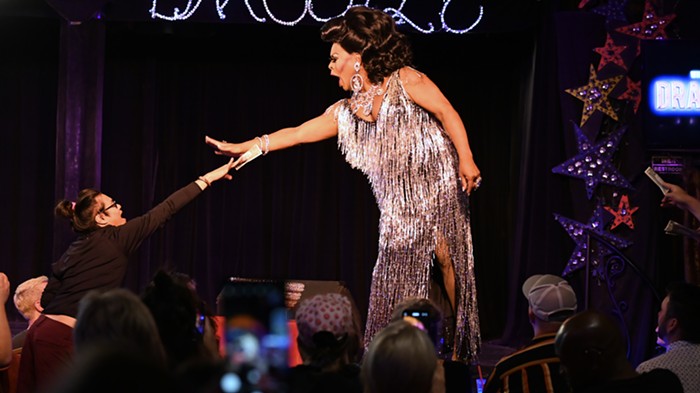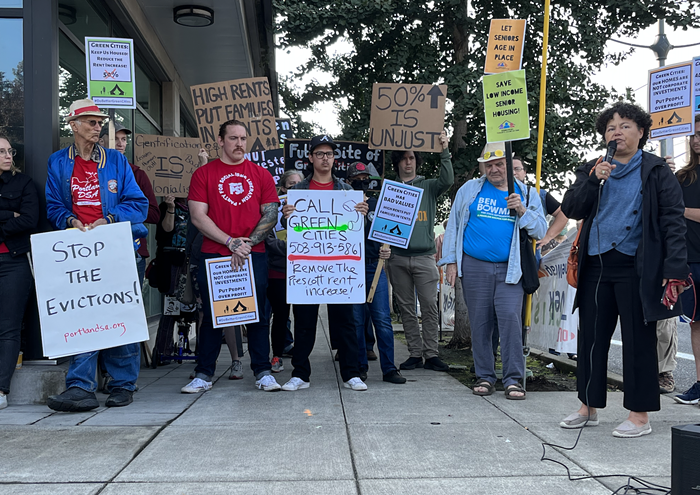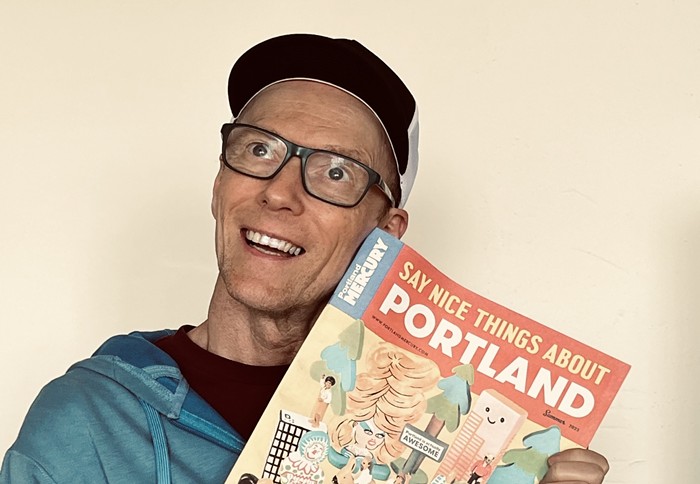
A film about reflecting on the stories we tell through art and history, Candyman is an utterly unexpected yet imaginative horror film guided by a confident hand from writer-director Nia DaCosta. Along with co-writer Jordan Peele, DaCosta has created something incisive by delicately tapping into a unique storytelling frequency that reinterprets its past horror to enlighten and frighten in equal measure.
The mythology of Candyman may seem like an unlikely one to revisit. For those unfamiliar, the original film came out in 1992. It was followed up by two sequels, 1995's Farewell to the Flesh and 1999’s Day of the Dead, that drastically declined in quality. This newest film smartly ignores most of those other sequels to remain focused on building upon the foundation from the original. The result is a film that is both in conversation and in a profound tension with its predecessor. DaCosta’s distinct direction recalls how she incisively played with genre in her fantastic debut, 2018’s Little Woods. Here, she shows how a new entry in a series, even after all this time, can create a vivid vision all its own.
DaCosta’s film picks up in the original location of Chicago, though it has been several decades since the mysterious Candyman last began to strike terror in the city. The former housing projects of Cabrini-Green, as well all the people who lived there, have been erased to be replaced by a rapidly gentrifying city. Right in the middle of this is the struggling artist Anthony (Yahya Abdul-Mateen II) who is trying to find his voice and vision for his new art. He is living in a nice new apartment with his partner Brianna (Teyonah Parris), whose work as a curator gives Anthony a way into the art world. This serves as a point of conflict when it is made clear that she is also supporting him while he tries to make a name for himself in the often shallow art scene.
As Anthony struggles to carve out a place for his work and deals with a gratingly disrespectful art dealer, he begins to look into the history of his neighborhood. He becomes consumed with a desire to learn more about the racist roots of housing discrimination in Chicago, which gave birth to a myth like that of the Candyman. What first seems like a passion will become all he can think about. This starts when he goes down to the now abandoned projects to take photos where he is stung by a bee. It is just a small sting on his hand that begins to, like his relentless focus on his new project, slowly get more and more all-encompassing of his being. Amidst this, brutal killings have begun to happen just like they did in the original film, with many of them impacting those closely tied to Anthony.

That is where the horror takes on a deeply personal tone. As Anthony begins to learn more about the history of Candyman, he learns more about himself and his own past that will soon become inescapable. The audience is invited to question if it is him doing the killings and what connection he may have to the Candyman’s origins. Not the being that kills people with a hooked hand, but the person that was Daniel Robitaille, the son of an enslaved man. Daniel was killed by a lynch mob after having a relationship with a white woman while working as an artist. Where that history is handled somewhat clumsily in the original films, it’s put front and center here. DaCosta reveals how the heinous killing that gave birth to the terrifying figure was not an isolated incident, but part of a dark trajectory of history. There were so many Daniels through time and there have continued to be, ensuring there will always be a Candyman.
It is this much deeper and richer take on the mythology that makes the film so striking. This is bolstered by DaCosta’s brilliant eye for strange and unsettling visuals that steadily get under your skin. It isn’t just the killings themselves, but the quieter in-between moments as well. Whether it is the effect of Anthony walking down a consistently turning hallway where you can’t fully see around the corner, or when he finds himself trapped in an elevator that creates an infinity mirror effect where his reflection goes on endlessly, they all create a penetratingly haunting atmosphere. The killings themselves are varied in execution, sometimes being shown quick and up-close while others are painfully prolonged yet far away. These variations give the film a sense of dread, as it isn’t clear when and how the next death will occur. DaCosta also plays with our eyes, choosing to keep the Candyman invisible save for whenever he is caught in the brief reflection of a mirror. It keeps you guessing, never letting you get too comfortable.
There also is a remarkable degree of body horror that is effectively stomach churning. As the bee sting becomes an increasingly unavoidable problem for Anthony, you feel every moment where his skin and fingernails begin to peel away. Abdul-Mateen II is outstanding, showing a fearful vulnerability and acute pain that is heart-wrenching. The transformation he undergoes is upsetting, especially when seen through the eyes of those around him. It will be Brianna who most directly has to deal with the repercussions of his slow decay. The film does not initially give her enough focus, to the point of it feeling underdeveloped. However, it becomes clear that the pain they are both going through is not new to Brianna and echoes a past she is trying her best to run from.

Seeing the couple try to make sense of the impending doom befalling them is painfully riveting.
With all that being said, it would be a travesty to overlook Colman Domingo's William. The character actor has proven that he can steal every scene he is in, doing so in another standout film from this year Zola. Here, his role as the grizzled former resident of the projects provides a connection to the past that soon ties the whole film together. The film approaches this past, not with the typical abundance of flashbacks, but with an artful use of shadow puppetry that was done by a Chicago studio. The effect of the haunting and moving animation reveals information delicately in a manner unlike anything else ever put to film.
As much as Candyman is a horror, it is also a tragedy. The pain and loss here is real, grounded in the ongoing history of seeing the violence of our past grind countless lives into oblivion. The entirety of the film makes this clear, though the conclusion in particular is multilayered in its details. It is certainly unexpected, flipping the script on the films that have come before it by upending the way these prior incarnations of the myth have handled the conclusion for its characters. It is fitting in how tragic it is, ensuring the film ends with honesty and a reckoning with the past as its thesis. It is a poetic glimpse into multiple reflections to understand who the Candyman is beyond the myth, with DaCosta showing us an unflinching mirroring of the past that becomes our present.
You can see Candyman in theaters starting Friday, August 27.


















